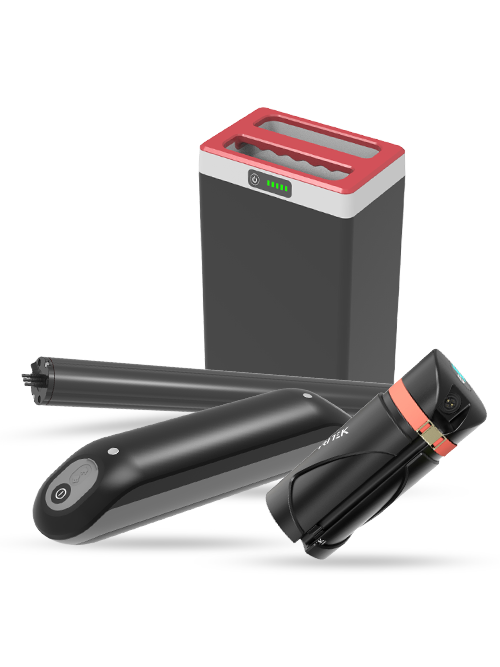As a project manager, it’s important to understand the different components that make up an e-bike battery. This will allow you to better estimate the cost and timeframes for your project. In this blog post, we’ll take a look at the main hardware components of an e-bike battery: fire-proof shell, LED display (just used in parts of battery packs), smart BMS, cells, cell holder, sealing ring, cell busbar, connectors and cables, and charger.
We’ll also discuss some of the key benefits of each important component. Read on to learn more!
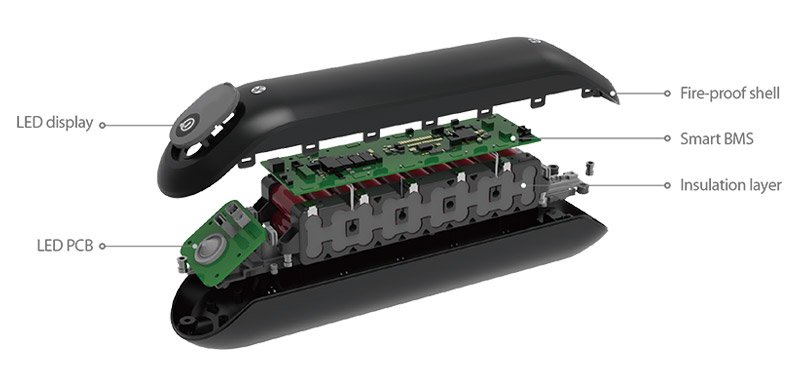
Fire-proof Shell or Battery Case
The fire-proof shell or battery case is the outer casing that holds all of the cells and BMS together. It’s important to choose a case that is made from high-quality materials and is resistant to shocks and drops. This will help ensure your battery stays safe and performs well for a long time.
The materials include ABS and PC, which are produced by an injection mould. It owns a certain level of fire-proof ability so as to effectively protect users from secondary damage in an accident.
Also, the certification will affect the case materials and design.
For example the UL2271. It requests the battery able to pass the crash test. The crush test will have force at a different angle, and the battery should not catch fire or explode. In this case, the high-strength metal case with UL battery cells often passes the test.
On the other hand, waterproofing is also part of UL. That requires the case to have a good selling design to help the battery pass the test.
LED Display
It can show the battery SOC, as well as allow to show the battery conditions, for example, current, voltage, and temperature. However, such an LED display is not suitable for all electric bike battery packs, which are designed as per customers’ ideals.
BMS (Battery Management System)of Lithium Battery
BMS short for Battery Management System is a circuit board and the key part of lithium-ion batteries. Some are more dependable than others. But, generally speaking, the better BMS systems will use higher-quality components and have a longer track record of reliable performance.
As a BMS circuit board, it includes various parts: NTC, B+/B-, P+/P- to the controller, motor power, PAS, USB 5V / backlight, power switch, and charging cable/ CAN cable.
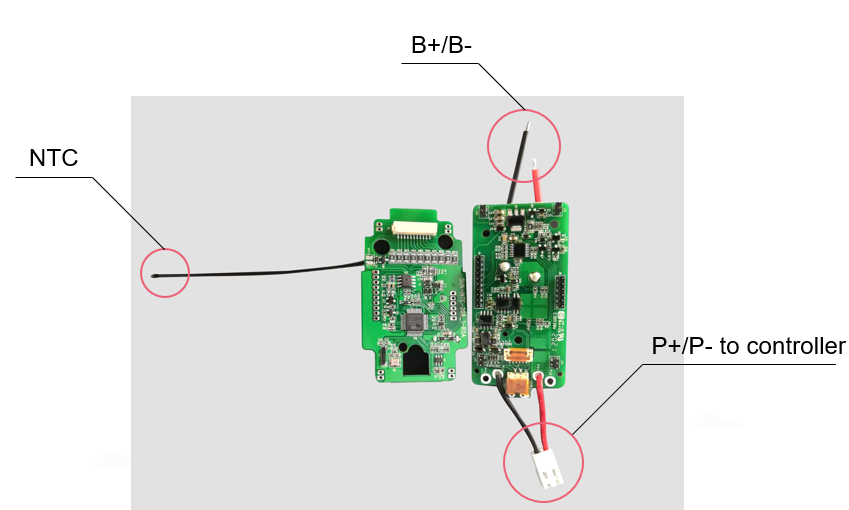
This circuit board assembly enables you to control the battery’s voltage level, current, and temperature. It helps to keep the battery safe by preventing it from overheating, overcharging, or over-discharging. If it does, then BMS will disconnect that cell from the rest of the pack.
It also monitors and reacts to SOH, SOC, and DoD with the assistance of balancing status.
Discover more about the protections offered by a battery management system.
Cell balancing and thermal management systems are two key features of a BMS. A cell balancing system ensures that each battery pack’s cells are within an acceptable range in terms of battery voltage and capacity. When the SOC or SOH changes, it is balanced by charging or discharging some cells to keep everything in balance. This can help maintain battery life.
Cell balancing is of two types, passive and active. Passive cell balancing doesn’t use any external power, while active cell balancing does. Passive cell balancing is more common in the e-bike battery market because it’s more reliable and doesn’t use any extra power.
Thermal management systems are used to keep your e-bike’s batteries at an appropriate temperature while also protecting them from overheating. Since heat is one of the biggest threats to lithium-ion cells, thermal management can make a big difference in terms of overall safety and performance for your bike.
Smart BMS can send out the thermal data to the e-drive system controller so that it can take the necessary steps to protect the battery.
A smart BMS design follows up your mind and meets your customized communication requirements, such as CAN, RS485, UART, etc.
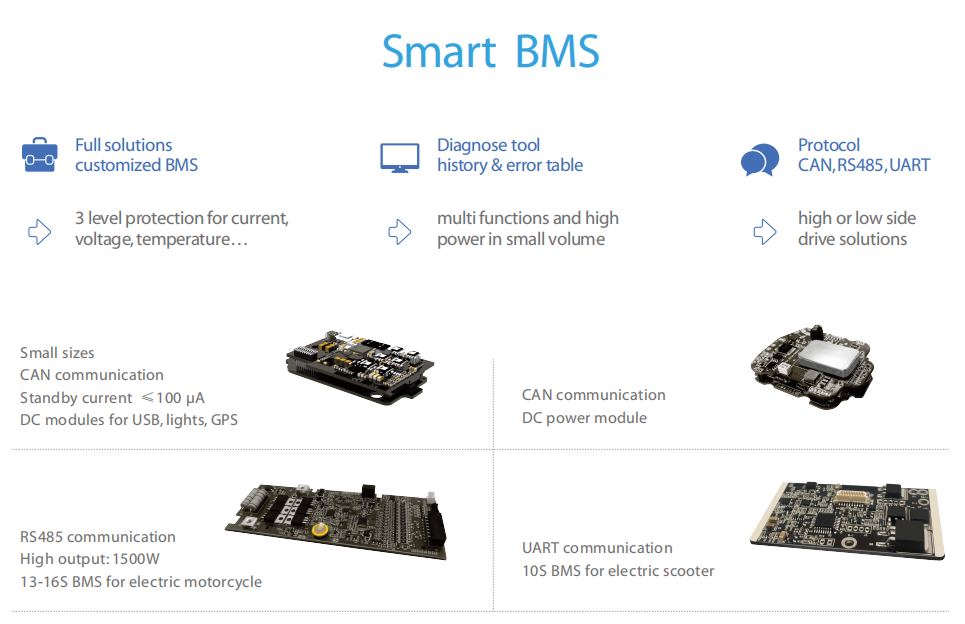
Also, for certifications and compliance, the BMS system is responsible for reporting specific information to a battery pack’s management software and communicating with it. The UL 2271 and EN 62133 safety standards mandate the need for a BMS in e-bike batteries.
Besides safety, BMS is also responsible for battery quality. Good BMS helps to ensure that each cell in the battery pack is performing within its manufacturer’s specifications and delivers consistent performance over the life of the lithium battery. Lowering down the weakest cell affects the whole pack. This results in longer run times and fewer problems with your electric bicycle.
Battery Cells
It’s also important to choose cells that are certified by a reputable organization like UL (Underwriter Laboratories). This ensures that the cells meet certain safety standards and are not prone to fire or explosions.
Electrode materials: the anode is triple elements NI, Co, Al, and the cathode is Graphite plus Si.
There are three cell types: NCM (triple elements Ni, Co, Mn), NCA (triple elements Ni, Co, Al), and FePO4. We accept all kinds of cells to produce battery packs, such as Samsung, LG, Panasonic, BAK, FEB, EVE, and even customized cells.
Each cell manufacturer has a different cell type, for example, high-output cells usually have lower capacity. But can have up to 5C output current. It is often to be used in the power tool.
Large capacity cells usually will have lower output current. For example, the Panasonic GA and LG HG2 would be good examples.
The Panasonic GA has a capacity of 3450mah and the continuous discharge rate is 1C which is 3.45A. While the LG HG series has a capacity of 3000mah and the continuous discharge rate is 2C which is 6A.
GA is commending the use of a lev battery and on the other hand, LG HG2 is recommended to use for a power tool.
As you can see from above, the GA has a higher capacity but lower output current while the HG series has low capacity and high output current which make them the better choice for lev battery. The reason is that there are other components in the lev battery beside the cell, like BMS(Battery Management System), e-bike motors controller, etc.
We usually choose NCA 18650 or NCA 21700 cells. They are not only smaller volumes but also have higher power and energy density.
Discover more about 21700 and 18650 cells for LEV.
Cell holder
The cell holder is the component that holds each of the lev cells in place. It ensures that your lev cells are properly aligned and prevents them from coming out or shifting around during use, transportation, etc.
Like the battery case, it’s important to choose a cell holder made with high-quality raw materials (i.e., metal) for durability purposes. Or specifically designed for your product.

Sealing Ring
To achieve a certain level of water and dust proof, we will choose TPU material or metal screws to seal the pack. Normally, Tritek’s LEV battery packs meet IPX67 requirements so that you can ride safely to forests, mountains, etc.
Cell Busbar
The cell busbar is the component that provides an electrical connection between all of the lev cells in the battery. It’s important to choose a busbar made from a high-quality metal (like copper or nickel) for optimal performance and durability.
The thickness and metal also depend on the different currents of the pack. For example, the current of the 200A lev pack is thicker than 50A.
The busbar will help charge and discharge smoothly for a long time. The wrong or low-quality busbar will be the weak point of the battery and lead to failure. For a larger electric motor, the current usually will be high, and carefully choose the thickness of the busbar.
Connectors and Cables for the Battery Pack Assembly
The connectors and cables used to connect the battery cells are also an important part of the battery pack. Poor-quality connectors can cause problems with charging, discharging, and thermal management. They can also lead to a shorter life span for the entire battery pack.
Good connectors should consider the waterproof and also the vibrations. In E-Mtb electric bike, we usually use a connector with a silicone cover. That can protect the contacts from water and dust and also prevent the vibrations from damaging the connection inside.
In a road electric bike, the connectors must handle the vibration and not fall off when the e-bike is moving. So, we use a connector with a screw to make sure it’s more reliable.
The quality of the connectors and cables can be just as important as the quality of the battery cells themselves. Make sure you choose a reputable supplier that uses high-quality connectors and cables in their battery packs.
That’s why it’s important to use high-quality connectors and cables when assembling your battery pack. And, as with everything else in life, you get what you pay for. So be prepared to spend a little extra money on quality connectors and cables if you want the best possible performance from your lithium batteries.
If you have any questions about the connector and cable, please don’t hesitate to let us know. We will help you to find the best solution for your project.
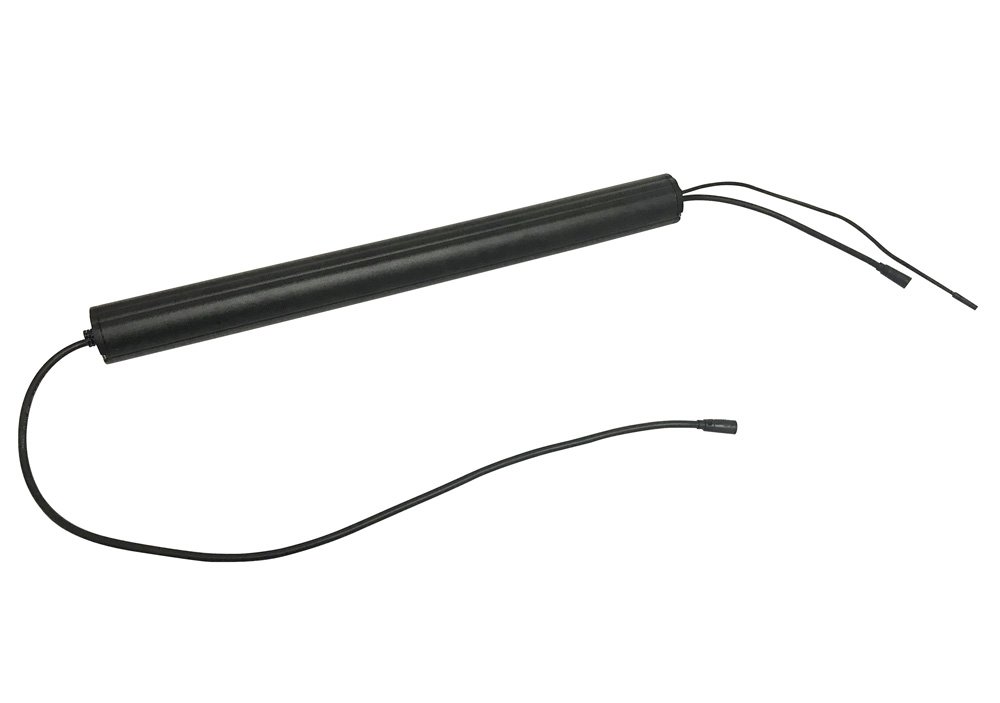
Electric Bike Battery Charger
The battery charger is also an important part of the battery.
The charger is responsible for charging a Li-ion battery and ensuring that it does not get damaged or overheated during the process. With a good electric bike, you should have two chargers: one to charge the batteries while they’re on your electric bike and another at home so you can fully recharge them in between rides.
The quality of the charger will affect the battery life. That is why most of our clients ask us to develop a matching charger for the battery project.
There are mainly two types of chargers: smart chargers and normal chargers.
The smart charger communicates with the BMS. It can adjust the charging current and voltage to make sure the battery is always safe. It also can protect the battery from overcharging and overheating.
The normal charger just uses a fixed current and voltage to charge the battery, it doesn’t have any communication with the BMS. So, it’s not as safe as the smart charger. The battery life will also reduce significantly.
The charger is a part of the battery which ensures your safety and protects your investment in the long run. Also, it can prolong the battery life of Li-ion batteries. So we recommend our client use a matching charger for their project if possible because that will give you better performance and a longer lifetime for sure.
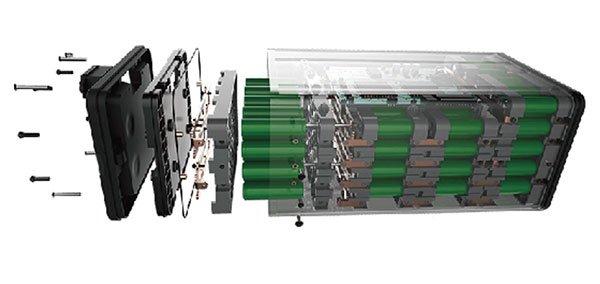
Above are the main components for an electric bike battery pack, of course, there are also other parts, for example, nickel strip, PC base, plastic cover, and so on. Tritek strictly chooses each incoming materials supplier and controls our materials, SMT, semi-finished products, and finished goods with many inspection tools and quality engineers.
We are confident that we could provide an excellent LEV battery and expect sincerely to cooperate with you!
Read more:


